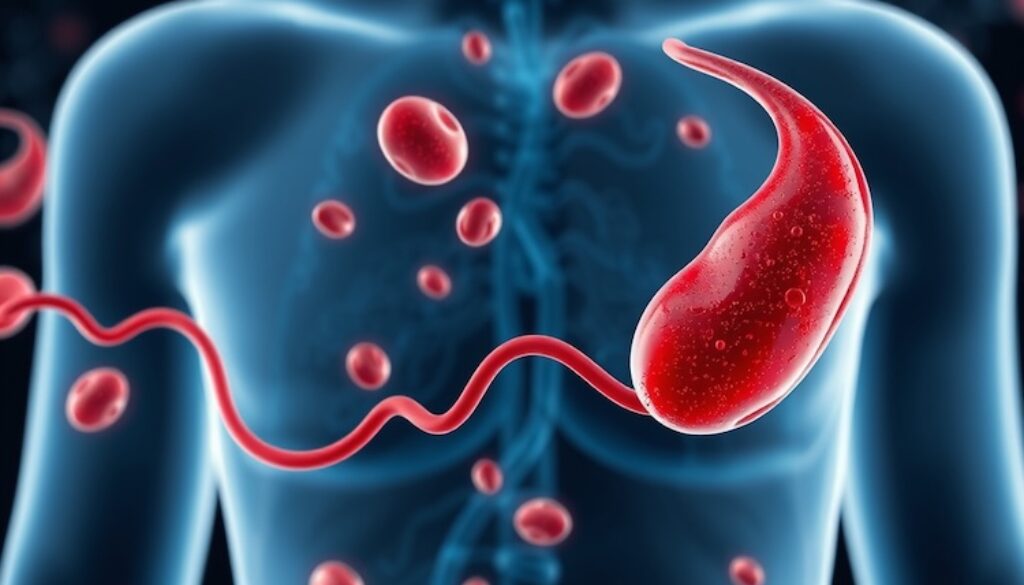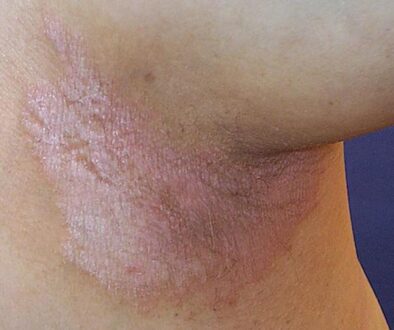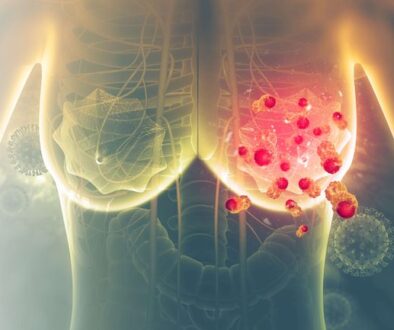Symptoms of High Blood Sugar (Hyperglycemia) And When to Seek Medical Attention
Hyperglycemia refers to elevated levels of glucose (sugar) in the bloodstream. It is most commonly associated with diabetes and can range from mild to severe. Many people do not notice any symptoms until blood glucose rises above ~180–200 mg/dL (10–11 mmol/L)
Recognizing the signs early is important, as prolonged or very high blood sugar can lead to serious complications. Below is a comprehensive list of early and advanced symptoms of hyperglycemia, along with their possible underlying causes, followed by guidance on when to seek
Normal Blood Glucose Ranger After Fasting and Meal
• Fasting (after about 8 hours without eating)
- A normal fasting blood sugar range is generally 70–99 mg/dL.
• After Meals (around 2 hours after eating)
A normal blood sugar range about 2 hours after a meal is typically less than 140 mg/dL.medical attention and potential complications.
Early Symptoms of Hyperglycemia
Early symptoms tend to develop gradually as blood sugar levels start to climb. Common early signs include:
- Frequent urination (Polyuria): Excess glucose in the blood overwhelms the kidneys. The kidneys try to remove the surplus sugar by filtering it into the urine, which draws extra water along with it (osmotic diuresis). This results in producing more urine and needing to urinate often.
- Excessive thirst and dry mouth (Polydipsia): The fluid loss from frequent urination leads to dehydration. Your body responds by triggering thirst to encourage you to drink more fluids. People with high blood sugar often feel very thirsty and may have a persistently dry mouth as the body tries to rehydrate.
- Increased hunger (Polyphagia): Even though plenty of glucose is in the blood, it isn’t getting into cells (due to lack of insulin or insulin resistance). Cells become energy-starved, and the body signals hunger in an attempt to get more fuel. In other words, the person feels hungry even after eating, because the tissues can’t use glucose properly for energy.
- Fatigue or weakness: High blood sugar can cause extreme tiredness. One reason is that the body’s cells cannot utilize the glucose for energy without adequate insulin, so the person has less energy available. Additionally, dehydration from polyuria can contribute to fatigue and weakness.
- Blurred vision: When blood sugar is high, it can cause the lens of the eye to swell or change shape due to shifts in fluid. This affects the eye’s ability to focus, leading to temporary blurry vision. (Over time, chronic high glucose can also damage the small blood vessels in the retina.)
- Headaches and difficulty concentrating: Hyperglycemia and dehydration can cause headaches and make it hard to concentrate. Some people feel groggy or have trouble thinking clearly when their blood sugar is high.
- Frequent infections or slow-healing wounds: High sugar levels weaken the immune system and create an environment in which microbes thrive. People with elevated blood glucose may notice recurrent infections such as yeast infections or urinary tract infections, and cuts or sores that heal slowly. Poor circulation and impaired immune cell function due to hyperglycemia make it harder for the body to fight infections and repair tissue, prolonging healing time.
- Unexplained weight loss: In cases of prolonged or untreated high blood sugar (especially in type 1 diabetes), the body cannot use glucose for energy and starts breaking down fat and muscle for fuel. This can lead to sudden weight loss despite normal or increased food intake. The lost calories (from glucose) are literally being flushed out in urine, and the breakdown of body fat/muscle for energy causes weight to drop.
Why these symptoms occur: Many of the early symptoms above – the “3 Ps” of diabetes (polyuria, polydipsia, polyphagia) – are direct results of excess glucose in the bloodstream and the body’s attempt to maintain balance. The kidneys excrete glucose in urine, causing dehydration (hence thirst and dry mouth). Meanwhile, the inability of cells to absorb glucose leaves them starved for energy, prompting hunger and fatigue. High glucose also affects various tissues: the eye’s lens swells (blurred vision) and immune function is impaired (leading to infections and slow healing). If blood sugar is brought under control, these symptoms often improve. If not addressed, more severe symptoms can develop over time.
Advanced Symptoms of Severe Hyperglycemia
If blood sugar remains very high or goes untreated for too long, advanced symptoms can appear. Severe hyperglycemia can lead to dangerous conditions like diabetic ketoacidosis (DKA) or hyperglycemic hyperosmolar state (HHS). These are medical emergencies. Advanced signs and symptoms include:
- Nausea and vomiting: Very high blood glucose and ketone buildup can irritate the stomach and lead to nausea or vomiting. This is often one of the first warning signs of diabetic ketoacidosis.
- Abdominal pain: Stomach pain can accompany DKA and is thought to result from the effects of high ketone levels and acid buildup in the blood.
- Fruity-smelling breath: A distinctive sweet, fruity odor on the breath is a classic sign of ketoacidosis. It’s caused by acetone, one of the ketone bodies, being exhaled.
- Deep, labored breathing: People in DKA may develop Kussmaul respirations, which are deep and rapid breaths. This heavy breathing is the body’s way of trying to blow off carbon dioxide to compensate for the acid buildup in the blood (a response to metabolic acidosis).
- Rapid heartbeat: Hyperglycemia can cause dehydration (reducing blood volume) and stress on the body, leading to a fast, thready pulse. The heart beats quickly to maintain blood pressure and circulation in the face of fluid loss.
- Extreme weakness and confusion: As blood sugar climbs very high, the brain and other organs become dehydrated and cannot function properly. Someone with severe hyperglycemia may feel profoundly weak, confused, or disoriented. High blood osmolarity (concentrated blood) in HHS or acidosis in DKA can impair brain function, leading to altered mental status.
- Signs of severe dehydration: This can include very dry mouth and tongue, dry warm skin, sunken eyes, or hypotension (low blood pressure). The extreme fluid loss in DKA/HHS causes pronounced dehydration. The person may stop sweating and could feel dizzy or faint.
- Drowsiness, stupor, or loss of consciousness: In advanced cases, the person can become very drowsy or even slip into a coma. Both DKA and HHS can lead to unconsciousness (diabetic coma) if not treated. For example, HHS (more common in type 2 diabetes) often presents with neurologic symptoms like drowsiness or coma due to extreme blood thickness and dehydration, even without significant ketones.
These advanced symptoms indicate a medical emergency. Diabetic ketoacidosis typically involves high glucose along with high ketone levels and acidosis, and is often marked by many of the symptoms above (fruity breath, vomiting, deep breathing, etc). Hyperosmolar hyperglycemic state, on the other hand, may not cause fruity breath or heavy breathing (because ketones are minimal), but causes extreme dehydration, neurological impairment (confusion, seizures), and can also lead to coma. If any of these severe signs are present, immediate medical attention is required.
When to Seek Medical Attention
It’s important to respond appropriately when experiencing high blood sugar symptoms. Do not ignore moderate or severe hyperglycemic symptoms. General guidelines on when to seek medical help are:
- Seek emergency medical care right away (call 911 or go to the ER) if:
- You have ongoing vomiting or diarrhea and cannot keep down food or fluids. Inability to retain fluids can quickly worsen dehydration and lead to DKA/HHS.
- Your blood glucose remains above 240 mg/dL (13.3 mmol/L) and you have signs of ketones or DKA (such as nausea, vomiting, abdominal pain, rapid breathing, or fruity breath). This situation can progress to a life-threatening emergency if not treated promptly.
- You experience confusion, extreme drowsiness, difficulty breathing, or unconsciousness. These indicate a possible diabetic coma – call for emergency help immediately.
- Contact your healthcare provider (or seek prompt medical advice) if:
- Your blood sugar is consistently running high (e.g. above 240 mg/dL) even after taking medication or insulin as directed. This may mean your diabetes management plan needs adjustment.
- You have persistent milder symptoms of hyperglycemia (increased thirst, urination, fatigue, etc.) over several days, or any new symptom of high blood sugar. This could indicate undiagnosed diabetes or that your condition is not well-controlled, and a medical evaluation is needed.
- You develop a fever or infection and notice your blood sugars rising. Illness can trigger hyperglycemia; your doctor can advise on how to manage blood sugar during sickness.
- You have ketones in your urine (detected with test strips) or moderate symptoms of high blood sugar that are worsening, even if not yet an emergency. It’s important to intervene early before it progresses.
In short, don’t hesitate to seek medical attention if blood sugar levels are very high or if you feel very unwell. Early intervention can prevent hospitalizations. For those with diabetes, your doctor may provide individualized guidance on when to call (for example, if blood glucose stays over a certain level or if you have moderate ketones). If in doubt, err on the side of caution and get medical advice.
Complications of Untreated Hyperglycemia
Untreated or chronic high blood sugar can lead to serious health complications. In the short term, severe hyperglycemia can cause the acute emergencies mentioned above:
- Diabetic Ketoacidosis (DKA): A life-threatening complication mostly in type 1 (and sometimes type 2) diabetes, resulting from a severe insulin deficiency. The body starts breaking down fat for energy, producing ketones that make the blood acidic. DKA can progress to coma or even death if not treated. (Symptoms include those listed under advanced hyperglycemia: vomiting, fruity breath, Kussmaul breathing, etc.)
- Hyperglycemic Hyperosmolar State (HHS): A dangerous condition usually in type 2 diabetes (often older adults) where blood sugar becomes extremely high (often >600 mg/dL) without sufficient insulin. Severe dehydration and high plasma osmolarity develop. HHS can lead to neurological complications (seizures, coma) and has a high mortality rate if untreated. Unlike DKA, ketone levels are low or normal in HHS, but the risk of coma is similarly high.
Over the long term, persistently high blood glucose damages blood vessels and organs throughout the body. This can cause a range of chronic complications:
- Nerve damage (Peripheral neuropathy): High blood sugar harms nerves, especially in the hands and feet. This leads to numbness, tingling, or burning sensations, and loss of feeling in the extremities. Neuropathy in the feet, combined with poor circulation, means injuries may go unnoticed and heal poorly, contributing to foot ulcers and infections. In severe cases, untreated infections can lead to gangrene and may require amputation.
- Eye damage (Diabetic retinopathy): Over time, hyperglycemia damages the tiny blood vessels in the retina (the back of the eye). This can cause vision problems such as floaters and blurred vision, and may progress to partial or complete vision loss. High blood sugar can also cause swelling in the eye’s lens (as mentioned earlier), and increase the risk of cataracts and glaucoma.
- Kidney disease (Diabetic nephropathy): The kidneys’ filtering units (glomeruli) can be damaged by high glucose levels and high blood pressure, leading to protein leakage in urine and declining kidney function. Over years, this can progress to chronic kidney disease or even kidney failure requiring dialysis.
- Cardiovascular disease: Chronic hyperglycemia greatly increases the risk of heart attacks, strokes, and peripheral artery disease. High blood sugar contributes to atherosclerosis (plaque build-up in arteries) and other cardiac stress. In fact, heart disease and stroke are major causes of death in people with diabetes. Good blood sugar control, along with blood pressure and cholesterol management, is critical to reduce this risk.
- Frequent infections and poor wound healing: As noted, high glucose impairs immune function and circulation. Diabetics with uncontrolled sugar may experience frequent skin infections, gum disease, or urinary tract infections. Wounds, especially on the feet, heal slowly and can become chronic ulcers. These ulcers can get infected and, if not managed, lead to serious complications like deep tissue infection or sepsis.
Why these complications occur: Glucose that remains chronically elevated in the bloodstream causes damage to blood vessels (both small microvascular and large arteries) and nerves. This vascular damage starves tissues of oxygen and nutrients and leads to organ dysfunction. For example, the eyes, kidneys, and nerves have very fine blood vessels that are especially vulnerable to high sugar levels (causing retinopathy, nephropathy, neuropathy). Larger blood vessels feeding the heart, brain, and limbs develop accelerated atherosclerosis under diabetic conditions, causing cardiovascular disease. Additionally, high sugar directly interferes with immune cell function and feeds microbes, which is why infections are more frequent and severe. Good diabetes management – keeping blood glucose in target range – can significantly reduce the risk of developing these complications.
Conclusion
High blood sugar produces a spectrum of symptoms. Early on, someone may notice increased thirst, peeing, hunger, fatigue, and blurred vision as the body struggles to cope with excess glucose. If hyperglycemia worsens, more dangerous signs like vomiting, confusion, or fruity breath can appear – signaling an emergency that needs immediate care. Over time, uncontrolled hyperglycemia can damage organs throughout the body, leading to complications affecting the nerves, eyes, kidneys, heart, and more. It’s important to address symptoms of hyperglycemia promptly – with lifestyle changes, medications/insulin, and medical guidance – to prevent emergencies and long-term harm. Always seek medical attention if you have concerns about high blood sugar, especially if severe symptoms develop or if you have persistently elevated readings despite following your treatment plan. With proper management, many of these symptoms can be relieved and complications avoided.



